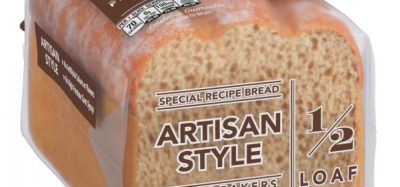The impacts of evolving consumer preference
- Like
- Digg
- Del
- Tumblr
- VKontakte
- Buffer
- Love This
- Odnoklassniki
- Meneame
- Blogger
- Amazon
- Yahoo Mail
- Gmail
- AOL
- Newsvine
- HackerNews
- Evernote
- MySpace
- Mail.ru
- Viadeo
- Line
- Comments
- Yummly
- SMS
- Viber
- Telegram
- Subscribe
- Skype
- Facebook Messenger
- Kakao
- LiveJournal
- Yammer
- Edgar
- Fintel
- Mix
- Instapaper
- Copy Link
Posted: 13 March 2020 | Will Cowling | No comments yet
FMCG Gurus’ Will Cowling takes a look at how consumers are changing their food and beverage shopping preferences, and discusses how this could impact the market.


Shopper habits are ever changing and with rising prices across Europe, consumers are now adopting new traits when shopping for food and beverage products. Price increases, environmental issues, and consumer perceptions on health are all impacting the way consumers now chose their groceries. So how are consumers across Europe changing when it comes to going to the shops and how is this impacting the market?
Are shopping prices increasing?
Prices across the globe are rising which is impacting the way consumers choose their food and drink products. FMCG Gurus shopper insights across nine different European countries in 2020 show that 88 percent of consumers think that the price of regular food and beverage products have increased over the last 12 months. The increase in rising prices is having a direct impact on consumer shopping habits. This is highlighted as 62 percent of European consumers have now claimed that they are making changes to their shopping due to rising prices in the market.
What changes are consumers making?
There are many changes consumers are now making to their shopping habits. One of the main changes is that consumers are now making greater efforts to avoid food waste with 69 percent agreeing to do so. This can also be linked to consumer taking a more proactive approach to looking after the environment, as many consumers are concerned and feel that the state of the environment has gotten worse in the last two decades. One other way in which consumers are changing is that they are cutting down on non-essentials. FCMG Gurus consumer insights show that 54 percent of European consumers are now cutting down on products such as chocolate and crisps due to rising prices.
Price increases, environmental issues, and consumer perceptions on health are all impacting the way consumers now chose their groceries.
Do consumers want store-own brands?
Another impact of rising prices in the FMCG market is that consumers are actively looking for store-own brands. Research shows that 56 percent of consumers say they are now looking to buy more store-own products when shopping. This is also highlighted as 48 percent of European consumers state they look for retailers that offer a broad range of private label food and drink products, ranging from standard to premium products. However, although consumers are actively seeking store-own goods, 45 percent say there are not enough private label/store own brands available to accommodate their health and nutritional needs.
Where are consumers shopping and why?
Consumers are still predominantly shopping in a physical store. This is seen as 87 percent of European consumers say they still go to the store rather than doing their weekly shop online. One of the main reasons why consumers are still going to the shop is because they want to evaluate how fresh products are in person. This is highlighted as 45 percent of consumers in Europe state they are untrusting of online shopping when it comes to being delivered fresh products.
* This article is based on FMCG Gurus’ new Shopper Insights 2020 survey series of nine European countries including Austria, Belgium, Czech Republic, Denmark, Hungary, Italy, Romania, Slovakia and Sweden.
About the author
As Marketing Manager of FMCG Gurus, Will Cowling is responsible for managing day to day marketing tasks ranging from campaigns to PR, to managing content on social channels and the website. Understanding the business and the industry is key to providing innovative ideas and producing quality content. He has a strong focus on evaluating consumer perceptions and deciphering insights.
Related topics
Environment, Health & Nutrition, Research & development, Supermarket, The consumer









